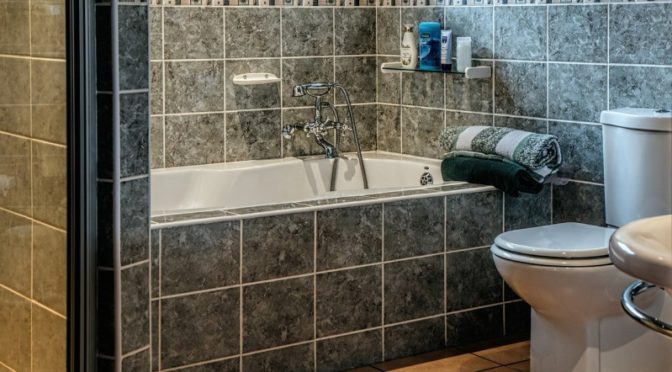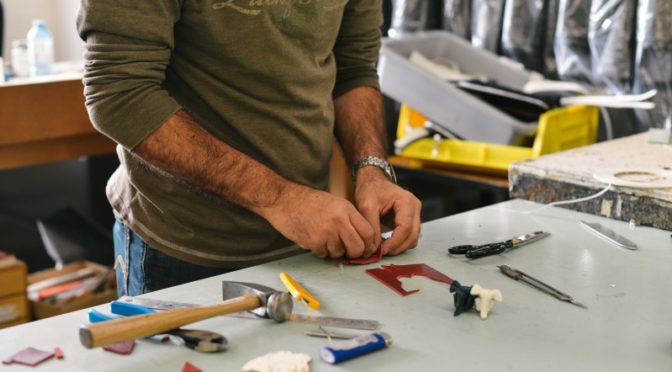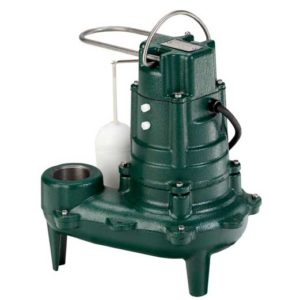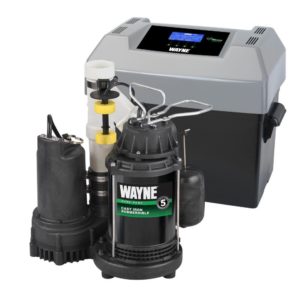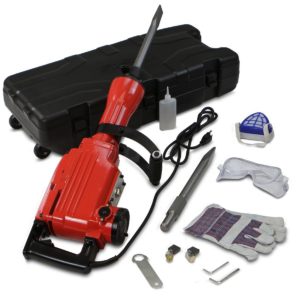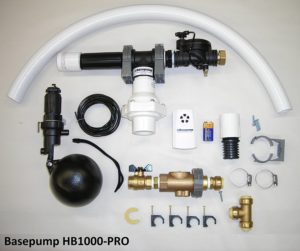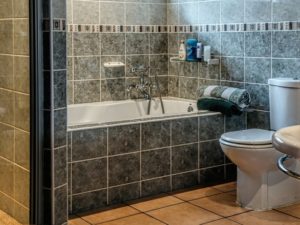
Unless you enjoy calling plumbers and paying high hourly rates, there are a lot of plumbing jobs you can get done on your own with a bit of reading, a bit of courage, and a lot of time. Replacing or installing a new toilet is one of them, except it’s not going to take you much time at all, even if you’re new. Here’s a guide to easily installing a new toilet in your bathroom, whether to replace a broken one or to simply upgrade an existing one in looks and energy efficiency. We’ll also cover recommendations and special tips for replacing macerating toilets in below-grade, basement bathrooms.
Turn off your water and remove the old toilet
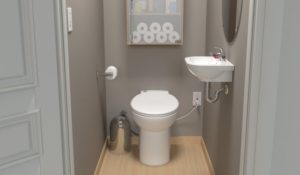
The first step is to turn off the water supply going to your toilet. There will typically be a shut-off valve behind the toilet, but if you can’t find one or if it wasn’t installed, you can shut off your water main; this will be in your basement if you have one or in a plumbing closet. You can follow your water heater to find it if necessary.
Once your water’s off, flush the toilet, holding the flusher down until there’s no more water in the bowl or reservoir. You’ll want to use a bucket and a sponge to soak up any remaining water so it doesn’t drip everywhere. If you have a macerating toilet, unplug it once you’re done flushing. Disconnect your toilet tank from your water line and unscrew the nuts on your toilet’s closet bolts; these are the bolts at the base of the toilet that connect your toilet to your floor. Lift the toilet up with the help of a friend and remove it carefully.
Remove the old wax ring and measure for a new toilet
With the toilet out of the way, cover the exposed drain so sewer gases from your pipes don’t enter your home. Clear out the wax ring with a putty knife; you won’t reuse it. Also make sure the closet flange is still in good condition; if it looks like it has worn down or begun to rust, replace it.
Use a tape measure to measure the distance from your closet bolts to the walls beside and behind your toilet; these measurements will give you an idea of the size of the replacement toilet you need, presuming you haven’t already chosen one. If you’re replacing a macerating toilet, keep in mind that you’ll need another; a regular toilet won’t be able to pump sewage against gravity.
Install the new toilet (but don’t over tighten it)
Connect your flange to the closet bolts for your new toilet and make sure each is aligned with your toilet’s holes. Rest the toilet upside down and carefully align a new wax ring over the base. Place your toilet on the drain, making sure to align your closet bolts. Be sure to press firmly in order to make a seal that’s watertight, or you’ll face a risk of leaks later on. Attach the nuts, washer, and cap base to your closet bolts and tighten everything down.
Make sure you don’t over tighten your bolts; this can lead to a cracked toilet, which you’ll then need to replace. Cover your closet bolts with caps. If any bolts are too long, you’ll need to cut them with a hacksaw. If your toilet is a two-piece model, install the bowl at this point. Typically the flushing components will already be assembled within the bowl. Install any necessary bolts as well as your rubber gasket and carefully set the tank on top of the toilet. Seal the two by tightening your bolts. Again, be sure not to over tighten them.
Reconnect water and check for leaks
Here’s the moment of truth. Reconnect your water line, turn it on, and look for leaks all around the toilet, particularly at the base and at the bowl. If you need to make adjustments, do so; it’s better to discover mistakes at this point than later. When the tank fills to the fill line, flush it and check the wax seal. If your toilet is leaking, shut off the water again and recheck your connections. If you don’t find any leaks, you can connect the toilet lid and use latex caulk to seal up the base of the toilet.
Know when you need professional help
While you can generally get this job done on your own with enough patience and trial and error, if you don’t feel comfortable taking it on alone and don’t have any knowledgeable friends, there’s nothing wrong with getting professional help. And if you do tackle the job on your own but can’t figure out where your toilet is leaking once you’re done with the installation, it’s important to get help. If you use a leaking or dripping toilet, you’re eventually going to either damage your bathroom, structurally speaking, or at the very least, tarnish its aesthetics. It’s particularly important to call for help if your closet flange or drains are damaged or leaking; while these jobs can be tackled without a plumber if you have enough experience, it might be a better use of your time to simply bring a plumber in instead of becoming one over the course of several weekends.
Which macerating toilets do you recommend for basement bathrooms?
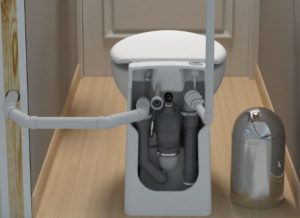
While most of the above advice applies equally to regular toilets and macerating toilets, macerators have a few unique points to keep in mind. First of all, if you’re installing one from scratch, such as in a basement bathroom addition or renovation, you’re more likely to need professional help unless your plumbing is already roughed in and you’re comfortable connecting your toilet to a discharge line and venting it. That said, there are macerators that don’t require venting, like the Saniflo Sanicompact, which we highly recommend and review here. The Saniflo Saniaccess 2 does require venting but is another excellent option for homeowners and landlords in search of a reliable macerating toilet. And of course, if you’re willing to put in a sewage pump or already have one installed, you won’t need a macerating toilet at all no matter where you set up a bathroom, as it’ll be able to pump sewage against gravity.
 If you find our work at PumpThatSump helpful, you can put our relentless reviewing of every pump and fixture on the market to the test by shopping via our links above for whatever you need to make your house a home. Despite being self-employed, we promise not to spend it all on health insurance.
If you find our work at PumpThatSump helpful, you can put our relentless reviewing of every pump and fixture on the market to the test by shopping via our links above for whatever you need to make your house a home. Despite being self-employed, we promise not to spend it all on health insurance.
